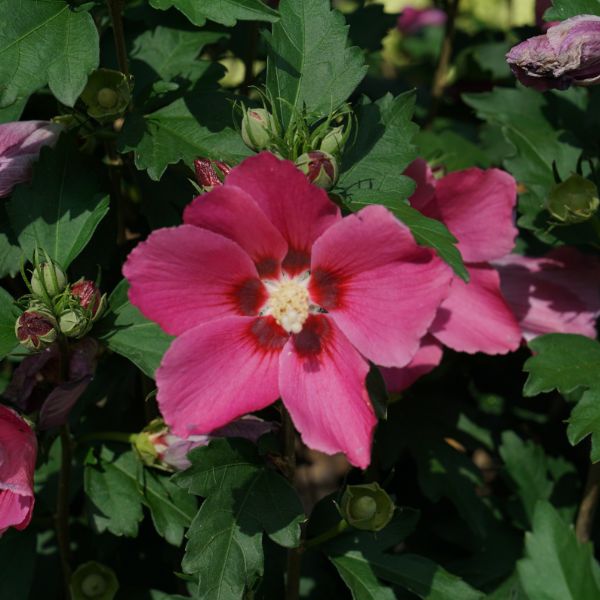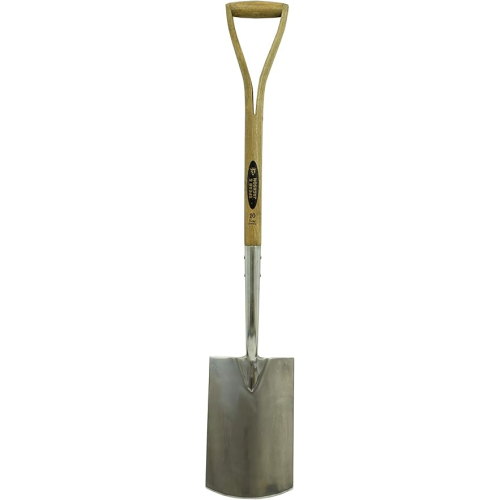Knowing when to plant Rose of Sharon makes it easier to get it established – discover the ideal window for your climate
Plus some key planting tips for happy and healthy shrubs
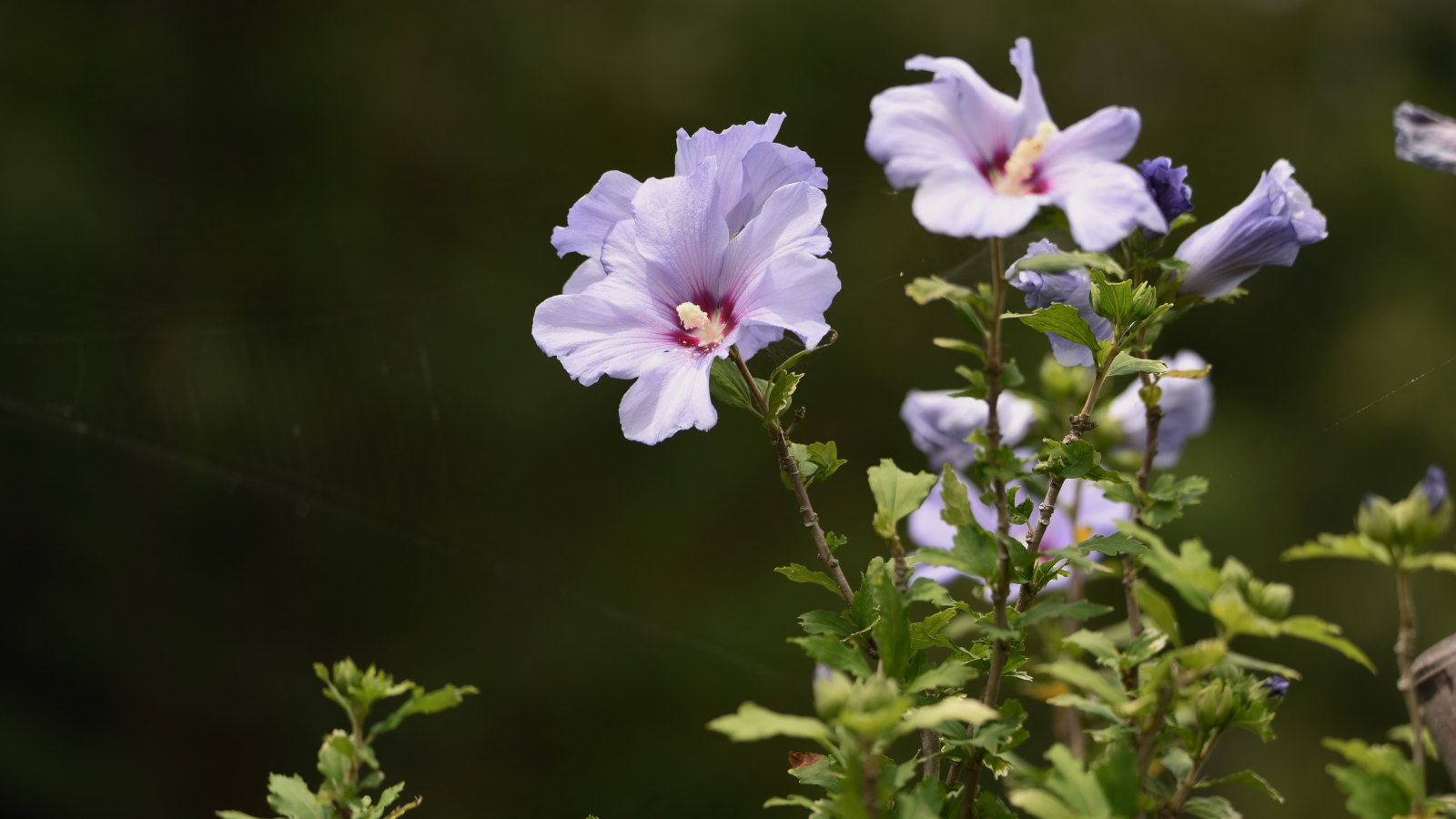

A Rose of Sharon (Hibiscus syriacus) makes a dazzling addition to any space, bringing a tropical vibe with showy trumpet-shaped flowers that bloom over a long period from midsummer into fall.
The flowering shrub can reach 8-12 feet, and offers gardeners an easy-to-grow addition in US hardiness zones 5-9. And where you live can impact when to plant Rose of Sharon shrubs.
If you want to add one of these glorious shrubs to your yard, knowing when to plant Rose of Sharon for your climate makes getting it established simpler. Discover the ideal planting windows for your location to have healthy shrubs and fantastic flowering displays that not only look amazing but also attract bees, butterflies, and hummingbirds.
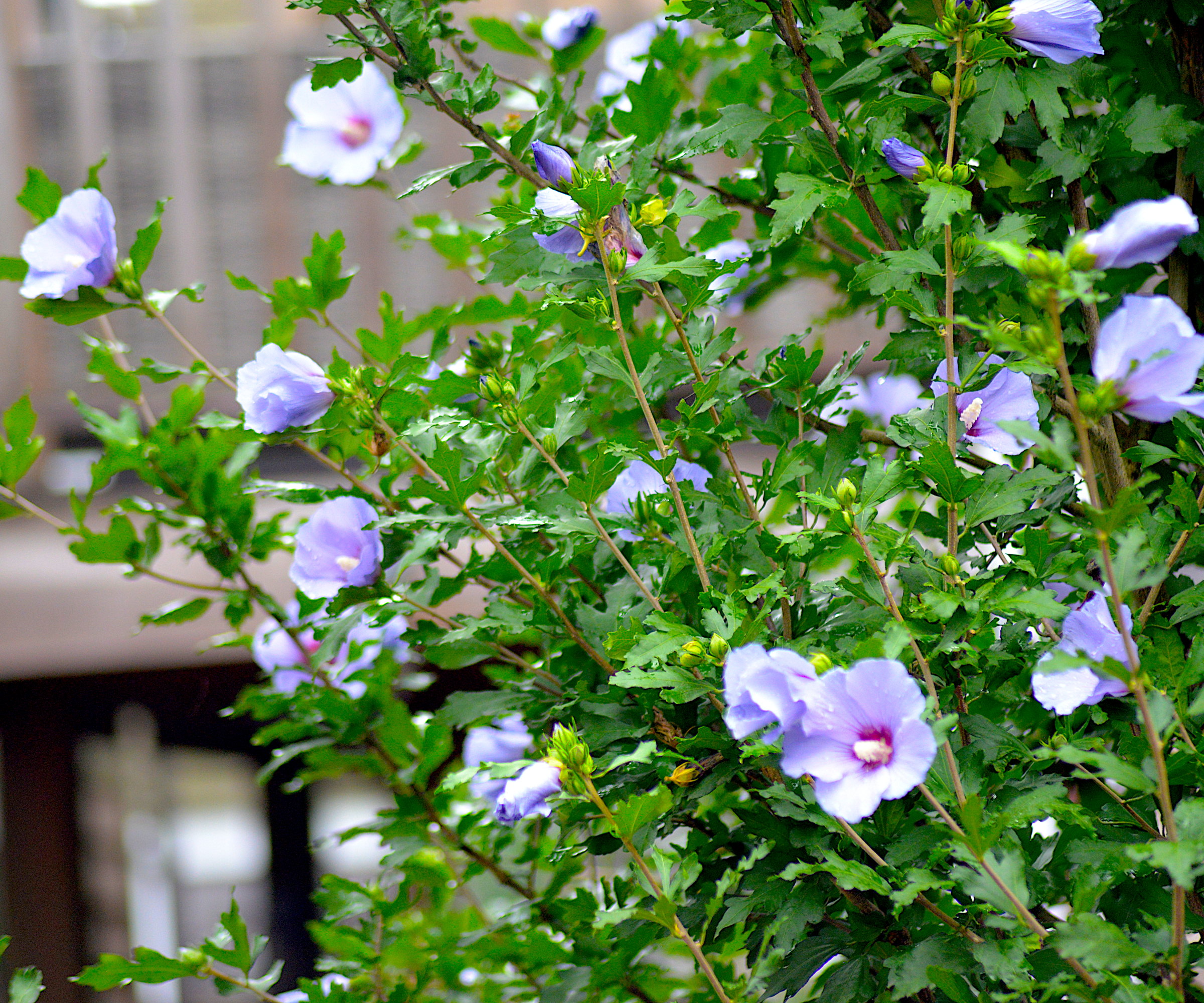
A guide to when to plant Rose of Sharon
Without starting on a downer, we must give a warning about planting the Rose of Sharon.
While the shrubs are showy and beautiful, they are considered invasive plants in four states as they can prolifically self-seed. Those states are Kentucky, Pennsylvania, Virginia, and Tennessee.
If you have worries about the plant spreading in your garden, you can plant sterile cultivars of it or deadhead plants to prevent self-seeding.
There are native hibiscus varieties to consider that are not invasive, such as the Texas Star Hibiscus or the rose mallow (Hibiscus moscheutos).
When to plant Rose of Sharon, depending on your climate
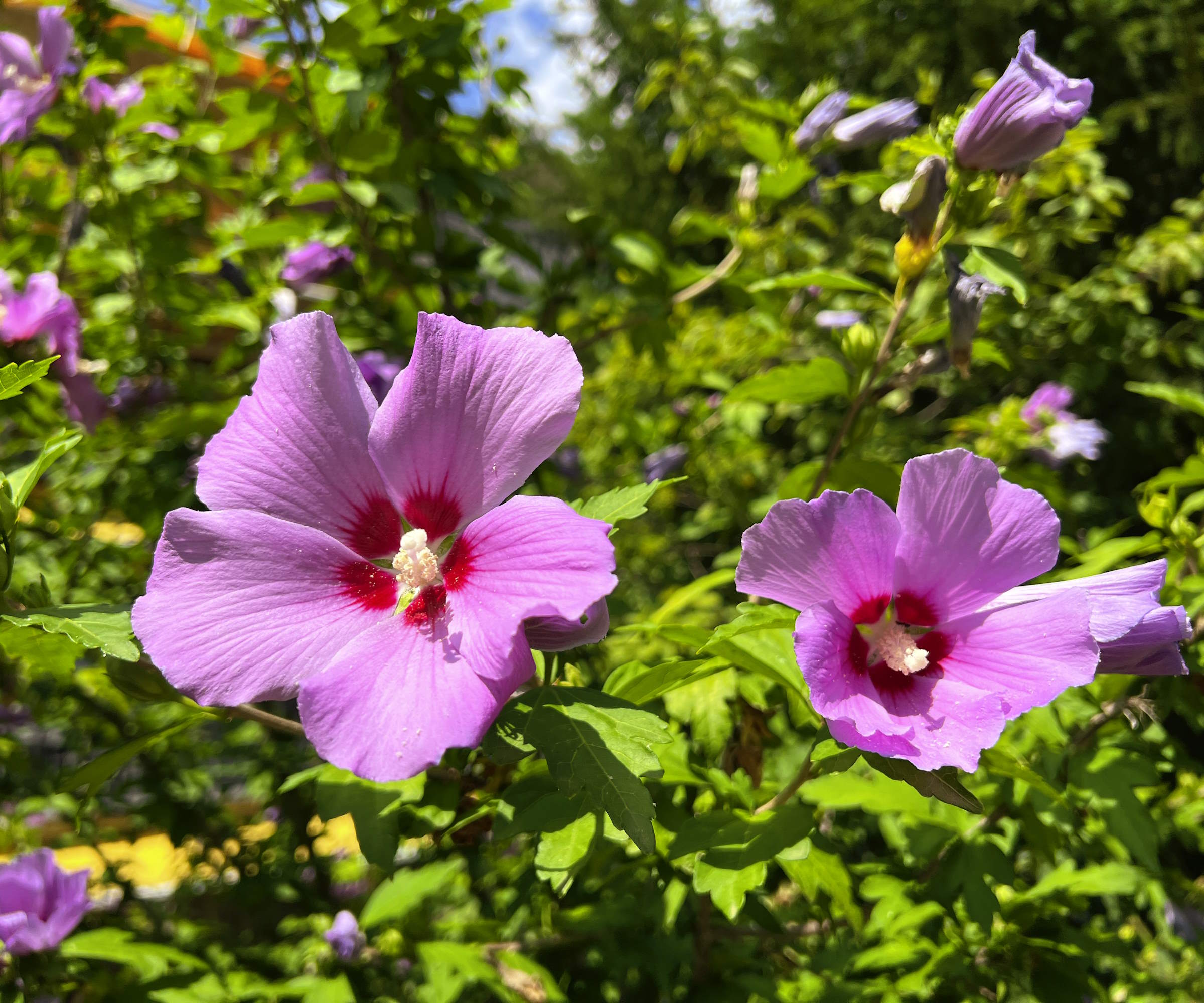
Knowing when and how to plant shrubs guarantees you the best chance of them thriving when they are added to your backyard ideas.
There are two ideal windows to plant Rose of Sharon, namely spring or fall, and it may depend on your climate or US hardiness zone for which works best for you.
Spring offers a great chance to plant Rose of Sharon if you live in a northern area that experiences cold winters. It is vital to wait until after the last frost to plant shrubs, so they establish quickly in cooler conditions and regular rainfall.
A spring planting in April or May gives the shrub ample time to establish a strong set of roots and stand it in good stead when temperatures rise in summer.
In warmer climates with milder winters, there is also the opportunity to plant Rose of Sharon shrubs in the fall. The window comes between the peak of summer temperatures dropping off and the first light frost.
Planting Rose of Sharon shrubs in the fall in cooler zones gives plants time to develop roots in warm, moist soil before the onset of winter. If you plant Rose of Sharon in the fall, they will flower strongly the following year.
While it is doable, it is not advisable to plant Rose of Sharon in the summer. Shrubs will be available to purchase in garden centers, nurseries, or online, but it can be a planting mistake to plant them in hot summer temperatures, mainly because they require a lot of painstaking watering.
Sticking to planting in spring or fall makes your life easier. It prevents lots of battling with garden hoses or lugging around heavy watering cans to keep the soil moist enough in summer for newly-planted shrubs.
How to plant Rose of Sharon - quick planting tips
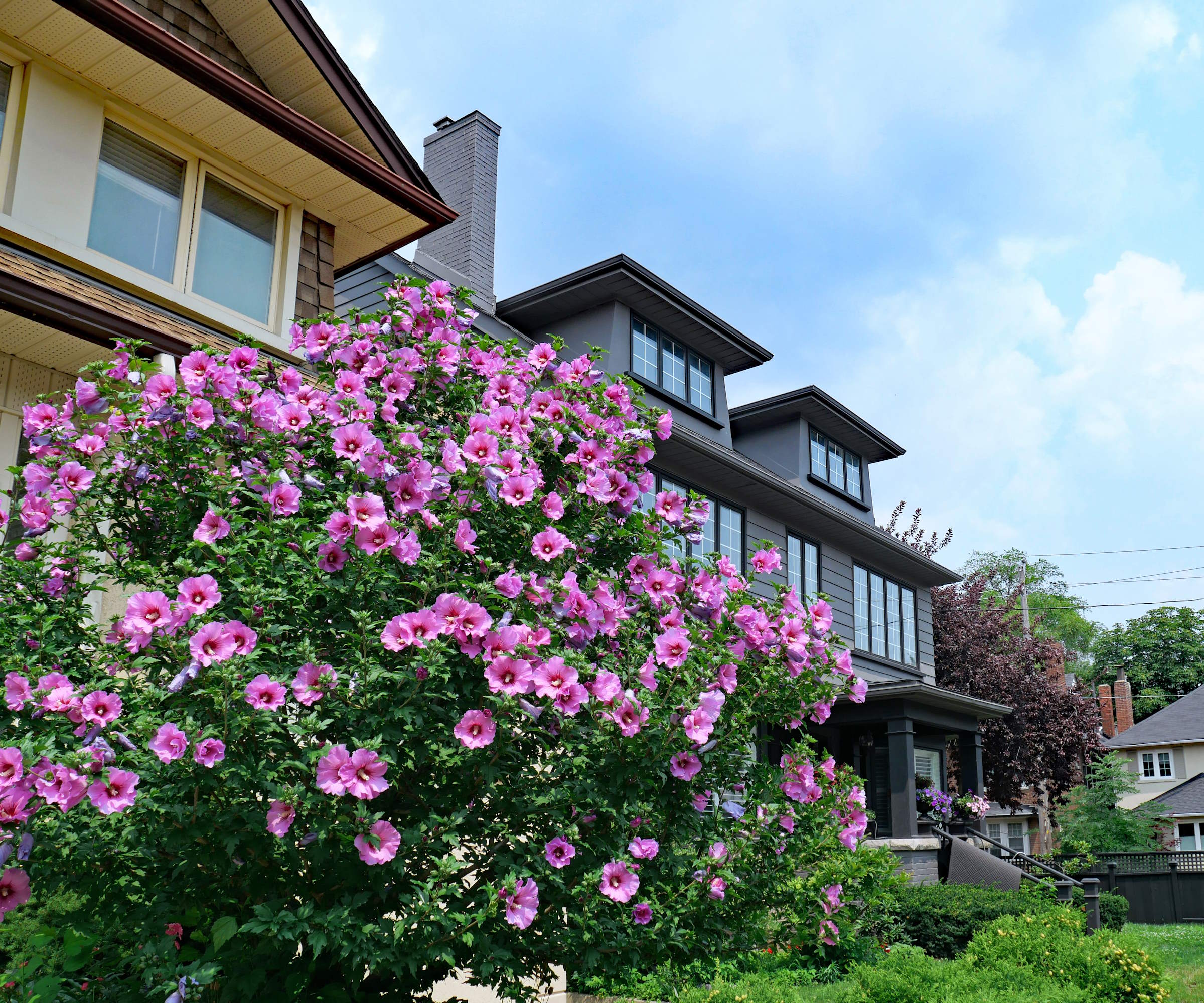
Plant Rose of Sharon in a sunny position in the garden, somewhere that gets at least six hours of sunlight. It can grow in part-shade, but flowering will be affected. It likes a rich, well-draining soil type and should be protected from strong winds in open sites.
Rose of Sharon shrubs should be planted 6-8 feet apart to give them adequate space to develop, but dwarf varieties of Rose of Sharon can be planted closer together, around 3-4 feet apart.
To plant Rose of Sharon, use a sharp digging spade to make a large hole as deep as the plant’s root ball and up to two times as wide.
Remove the shrub from its container and gently loosen the roots before placing it into the hole. Ensure it sits level with the soil and at the same level as in the nursery pot, and fill in around the root ball with soil. Gently press down the soil to remove any air pockets.
The Rose of Sharon will require regular deep watering to develop strong roots. It is beneficial to mulch around the shrub with a two-inch layer of organic matter, such as compost, well-rotted manure, or leaf mold.
This offers a three-fold advantage as it retains moisture in the soil, smothers weeds to reduce competition, and provides some nutrients as the mulching material breaks down.
A Rose of Sharon can be a low-maintenance shrub to add to your garden for bold flowers in late summer. One job you do need to remember is to prune a Rose of Sharon. The job may not be required annually, but it is recommended at least every few years.
Prune in late winter or early spring. Focus on removing dead, diseased, or weak branches ahead of gently shaping the shrub and removing any suckers.
Design expertise in your inbox – from inspiring decorating ideas and beautiful celebrity homes to practical gardening advice and shopping round-ups.

Drew’s passion for gardening started with growing vegetables and salad in raised beds in a small urban terrace garden. He has worked as a professional gardener in historic gardens and specialises in growing vegetables, fruit, herbs, and cut flowers as a kitchen gardener. That passion for growing extends to being an allotmenteer, garden blogger, and producing how-to gardening guides for websites. Drew was shortlisted for the New Talent of the Year award at the 2023 Garden Media Guild Awards.
You must confirm your public display name before commenting
Please logout and then login again, you will then be prompted to enter your display name.
